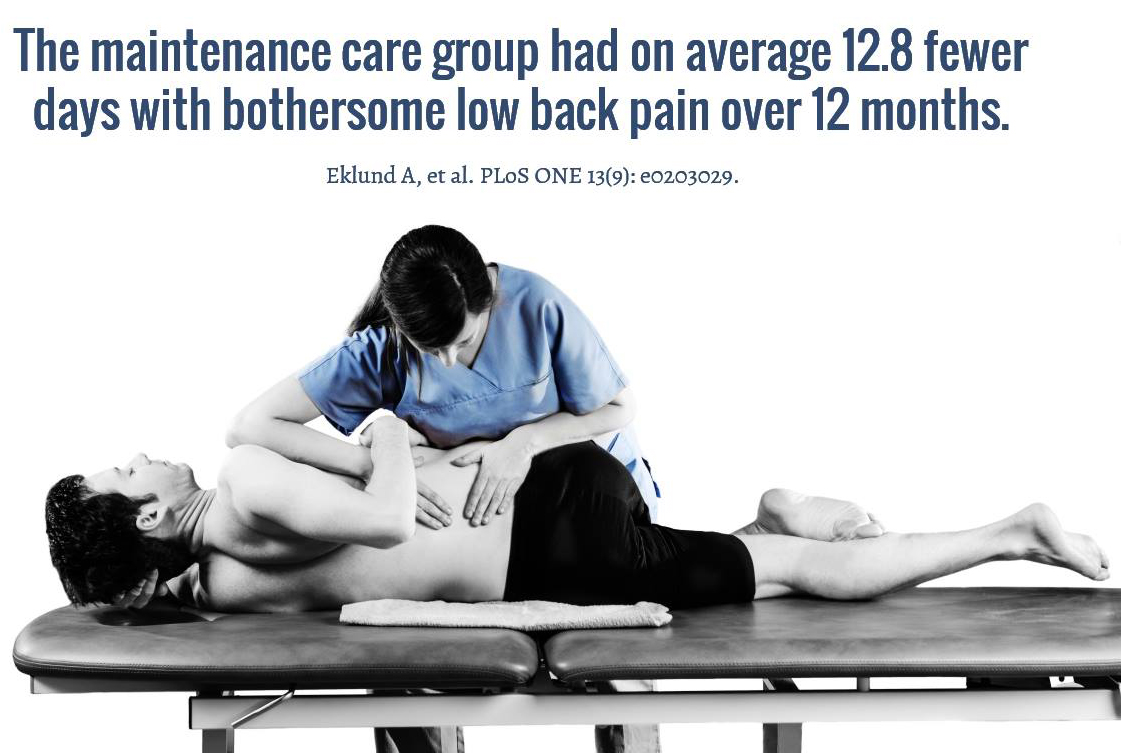The Nordic Maintenance Care Program: Effectiveness of Chiropractic
The Nordic Maintenance Care Program: Effectiveness of Chiropractic Maintenance Care Versus Symptom-guided Treatment for Recurrent and Persistent Low Back Pain – A Pragmatic Randomized Controlled Trial
SOURCE: PLoS One. 2018 (Sep 12); 13 (9): e0203029
Andreas Eklund, Irene Jensen, Malin Lohela-Karlsson, Jan Hagberg, Charlotte Leboeuf-Yde, Alice Kongsted, Lennart Bodin, Iben Axén
Karolinska Institutet,
Institute of Environmental Medicine,
Unit of Intervention and Implementation Research for Worker Health,
Stockholm, Sweden.
BACKGROUND: For individuals with recurrent or persistent non-specific low back pain (LBP), exercise and exercise combined with education have been shown to be effective in preventing new episodes or in reducing the impact of the condition. Chiropractors have traditionally used Maintenance Care (MC), as secondary and tertiary prevention strategies. The aim of this trial was to investigate the effectiveness of MC on pain trajectories for patients with recurrent or persistent LBP.
METHOD: This pragmatic, investigator-blinded, two arm randomized controlled trial included consecutive patients (18-65 years old) with non-specific LBP, who had an early favorable response to chiropractic care. After an initial course of treatment, eligible subjects were randomized to either MC or control (symptom-guided treatment). The primary outcome was total number of days with bothersome LBP during 52 weeks collected weekly with text-messages (SMS) and estimated by a GEE model.
RESULTS: Three hundred and twenty-eight subjects were randomly allocated to one of the two treatment groups. MC resulted in a reduction in the total number of days per week with bothersome LBP compared with symptom-guided treatment. During the 12 month study period, the MC group (n = 163, 3 dropouts) reported 12.8 (95% CI = 10.1, 15.5; p = <0.001) fewer days in total with bothersome LBP compared to the control group (n = 158, 4 dropouts) and received 1.7 (95% CI = 1.8, 2.1; p = <0.001) more treatments. Numbers presented are means. No serious adverse events were recorded.
There are many more articles like this @ our:

